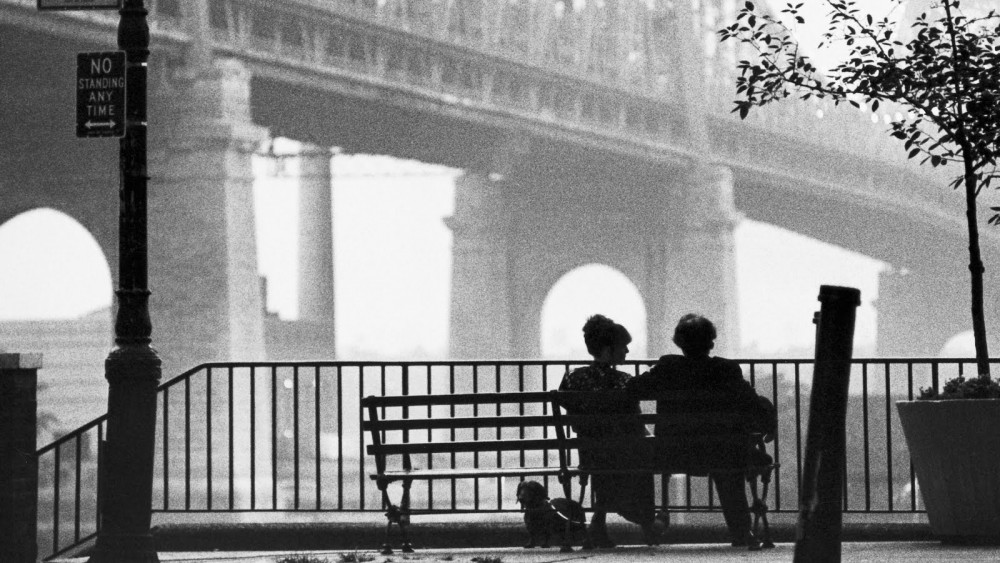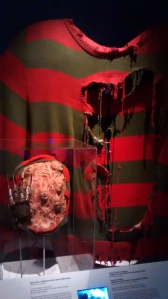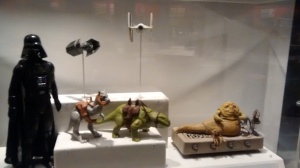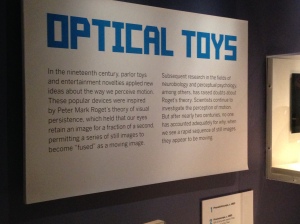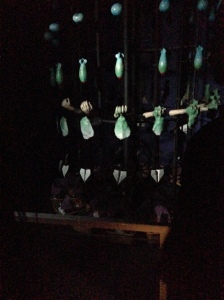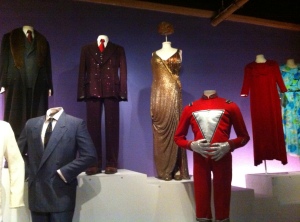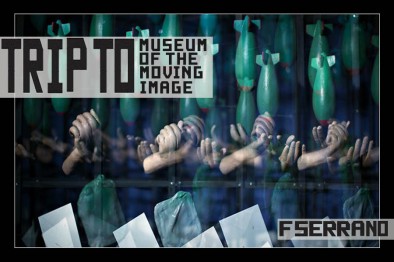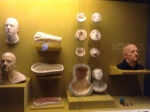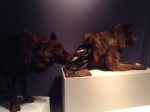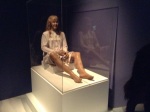Hi class,
In addition to the course book reading I have posted some background about The Jazz Singer and it’s varied critical reception from both current film historians and during it’s reception in 1927.
There are conflicting views about whether the film was an apologist story about a Jewish cantor’s son foregoing his Jewish roots to assimilate into White mainstream culture by renouncing his own ethnic identity and putting on blackface, or as one critic has said “jazz is prayer, American style, and the blackface minstrel the new Jewish cantor.” Below are different excerpted viewpoints, and I have also attached a fascinating article Why Did Negroes Love Al Jolson and The Jazz Singer by Charles Musser, who is a major film historian and teaches film studies at Yale University. Al Jolson had been performing in blackface for many years before the film, so an understanding of the minstrel tradition and Al Jolson is also important to understanding the films complex meanings.
I would like you to write 250-350 word post based on your reading and research, about your view of Al Jolson’s portrayal of Jack Robin, and which answers the following:
Was the character of Jack Robin trying to escape his Jewish roots by performing in blackface and to assimilate into mainstream White culture, or was he embracing the new musical idiom of Jazz music and black identity through this ‘mask’ … or some combination of both? How did audiences of different ethnicities in 1927 view The Jazz Singer and how do you view the film through today’s cultural perspective?
The attached critical paper by Charles Musser will help to put the film and blackface in a historical context. Do your best to approach this complex, but fascinating subject.
An excerpt from the Charles Musser paper (see link to article below): “Rogin contends that blackface was already a residual practice by the 1920s, suggesting that “Jews had almost entirely taken over blackface by the early twentieth century”. This would suggest that African Americans and more established European Americans had abandoned a performance practice that they found demeaning, while Jolson and other Jewish comedians still embraced this residual mode of performance. Instead of rejecting racist practices, Jolson has been seen as guilty of perpetuating them. Yet, as Arthur Knight has already noted and even a casual look at the black press in the late 1920s confirms, this is not the case. The use of blackface remained a well-established convention among African American comedians. When black-face comedian Sammie Russell, aka Bilo, played Gibson’s Standard Theatre in Philadelphia in May 1928, he was billed as “the Funniest man on Earth”.
The Jazz Singer by Charles Musser link to critical paper
———————————————————————————————-
Some background on “The Jazz Singer” and blackface.
Wearing blackface makeup was a common theater technique in the early 1900s used by white performers in order to mimic and appear as a black person on stage. Blacks were not accepted on the Broadway stage during that period due to racial prejudice. The audiences knew it was only makeup and understood that this was the only way they could see an act of a pseudo-black performance. However, a number of entertainers, including Al Jolson and Eddie Cantor, were sensitive to the musical talents of blacks and their creation of the new genre of totally American music, such as as ragtime, jazz, and blues, and chose to perform it on stage. Real black music could only be heard and experienced in small, unknown clubs or in cities like New Orleans that had a larger indigenous black population.
Jolson, being the most famous singer of that time period, used blackface makeup and performed jazz-style black music, thereby introducing it to America’s white theater audiences. He did this despite widespread racial prejudice and thereby is credited most for the eventual acceptance and assimilation of black music into America’s booming entertainment industry, including film, stage, and recorded music.
Jack Robin’s use of blackface, played by Al Jolson, is the primary focus of many critical studies about the film, “The Jazz Singer”. “The function and meaning of blackface in the film is intimately involved with Jack’s own Jewish heritage and his desire to make his mark in mass American culture – much as the ethnically Jewish Jolson and the Warner Brothers were doing themselves. Jack Robin “compounds both tradition and stardom. The Warners Brothers thesis is that, really to succeed, a man must first acknowledge his ethnic self. The whole film builds toward the blacking up scene at the dress rehearsal. Jack Robin needs the blackface mask as the agency of his own compounded identity. Blackface will hold all the identities together without freezing them in a singular relationship or replacing their parts” argues W.T. Lhamon (Raising Cain: Blackface Performance From Jim Crow to Hip Hop, Harvard University Press.
LIsa Silberman Brenner in Blackface as Religious Expression, Crosscurrents 2003, returns to the view expressed by Samson Raphaelson, on whose play the film’s script was closely based: “For Rafaelson, jazz is prayer, American style, and the blackface minstrel the new Jewish cantor. Based on the author’s own words, the play is not about blackface as a means to become White, but about blackface as a means for Jews ot express a new kind of Jewishness, that of the modern American Jew.”
According to Scott Eyman, the film “marks one of the few times Hollywood Jews allowed themselves to contemplate their own central cultural myth, and the conundrums that go with it. The Jazz Singer implicitly celebrates the ambition and drive needed to escape the shtetls (small towns) of Europe and the ghettos of New York, and the attendant hunger for recognition.
The film received mixed reviews in the mainstream press, but interestingly favorable reviews in both the Jewish and African American newspapers such as the Baltimore Afro-American, the Amsterdam News, and the Pittsburgh Courier.
This is excepted taken from the film historian, Charles Musser’s article; Why Did Negroes Love Al Jolson and The Jazz Singer. “Reactions to the film were certainly divided but, given this essay’s concerns, it is worth noting that the weekly American Hebrew celebrated the wholehearted enthusiasm that greeted Jolson and the “sentimental melodrama” on opening night and applauded both his rendering of “Mammy” and Kol Nidre. Jolson’s tears were seen as a natural result of such a conjunction. Perhaps somewhat more surprisingly, African American newspapers also praised The Jazz Singer and reported that race audiences (and it would appear, particularly black women) had intense emotional reactions to the film. When it was shown at Harlem’s Lafayette Theatre, “sobs were heard all over the theater at the Monday matinee during the dramatic moments in the picture”.
And Musser goes on to say: “Given the conventional disapproval of The Jazz Singer’s racial politics, we might reasonably ask how the film and Al Jolson were received in black communities during the 1920s – and then try to make sense of it. When it came to issues of race and representation, the black press was quite sophisticated and vigilant, with robust discussion and frequent disagreements. If, as Rogin’s Blackface, White Noise claims, “The Jazz Singer facilitates the union not of white and black but of gentile and Jew”, and if, “The Jazz Singer watered down revolutionary, black modern music in the name of paying it homage”, how did black people respond to the film at the time of its release?” To put it simply, in the late 1920s African American newspapers and moviegoers warmly embraced Al Jolson and The Jazz Singer. When the top end black theaters converted to sound, usually in 1928, The Jazz Singer was almost always the first feature-length talkie to be shown. In at least two instances, theaters catering to blacks did not even wait. In the first week of May, 1928, Harlem’s esteemed Lafayette Theater showed The Jazz Singer before it was wired for sound. Willie Jackson sang the songs from Tin Pan Alley live, while “Cantor Silverbush” sang Kol Nidre and Eli Eli. The Amsterdam News called it “one of the greatest pictures ever produced”. Very shortly thereafter Chicago’s Metropolitan Theater did the same. According to the Chicago Defender, “The picture is put on without this accessory [the Vitaphone], but Jerome Carrington capably sings and accompanies himself in the ‘Mammy’ song at the pipe organ”. Here are notable examples of white face, black noise. The Republic Theatre in Washington, D.C. was one of the first race theaters to be wired for sound. Its newspaper advertisements declared that The Jazz Singer on the Vitaphone was being held over for life, so don’t fail to see Al Jolson in The Jazz Singer on the Vitaphone now playing the Republic Theatre. Each performance of The Jazz Singer rouses the audience to wild outbursts of enthusiasm, expressed by tears, laughter or cheers . … It is unique. Tremendous. Unforgettable.”
